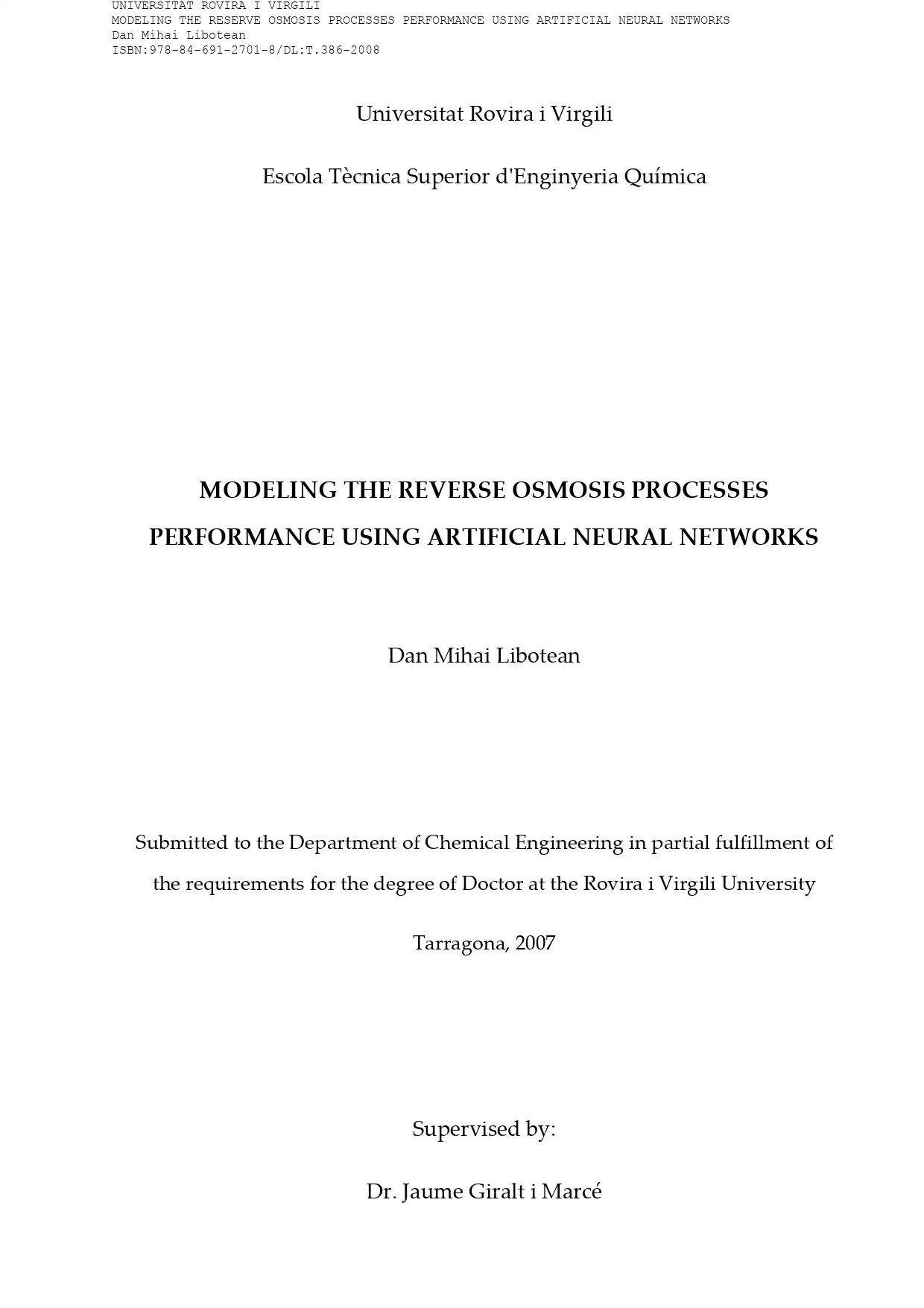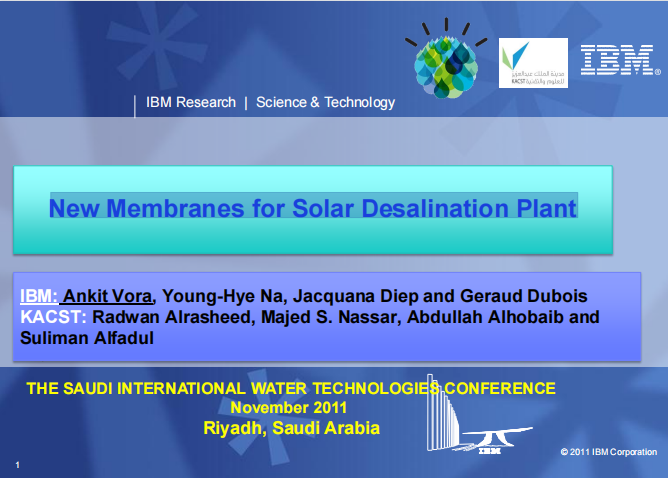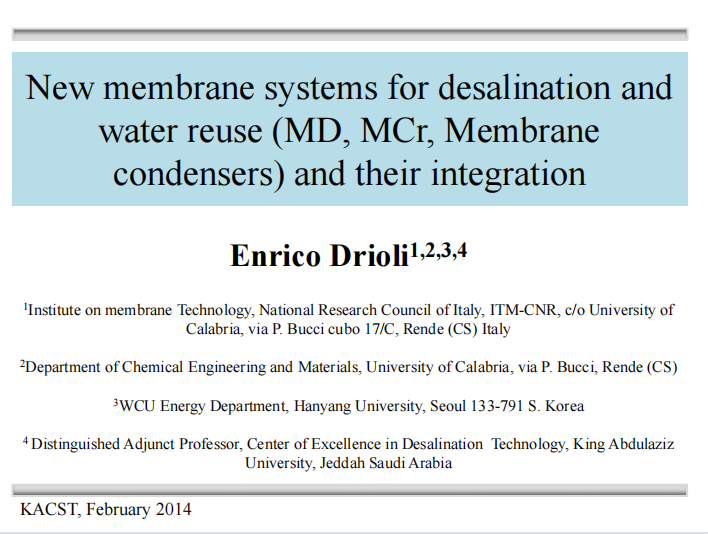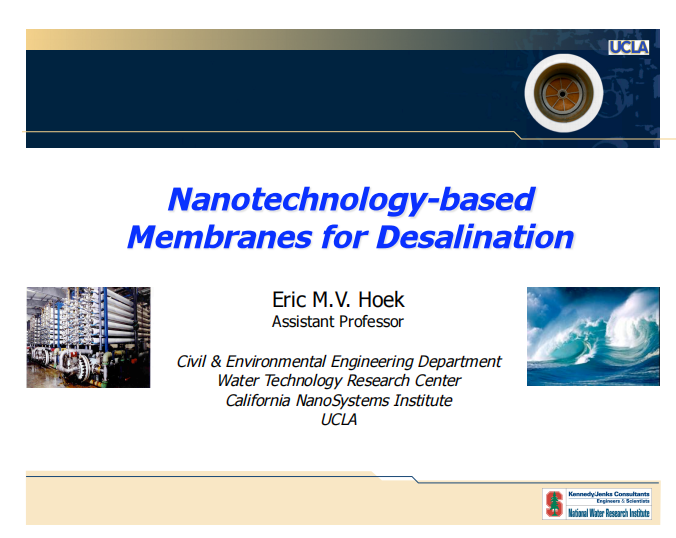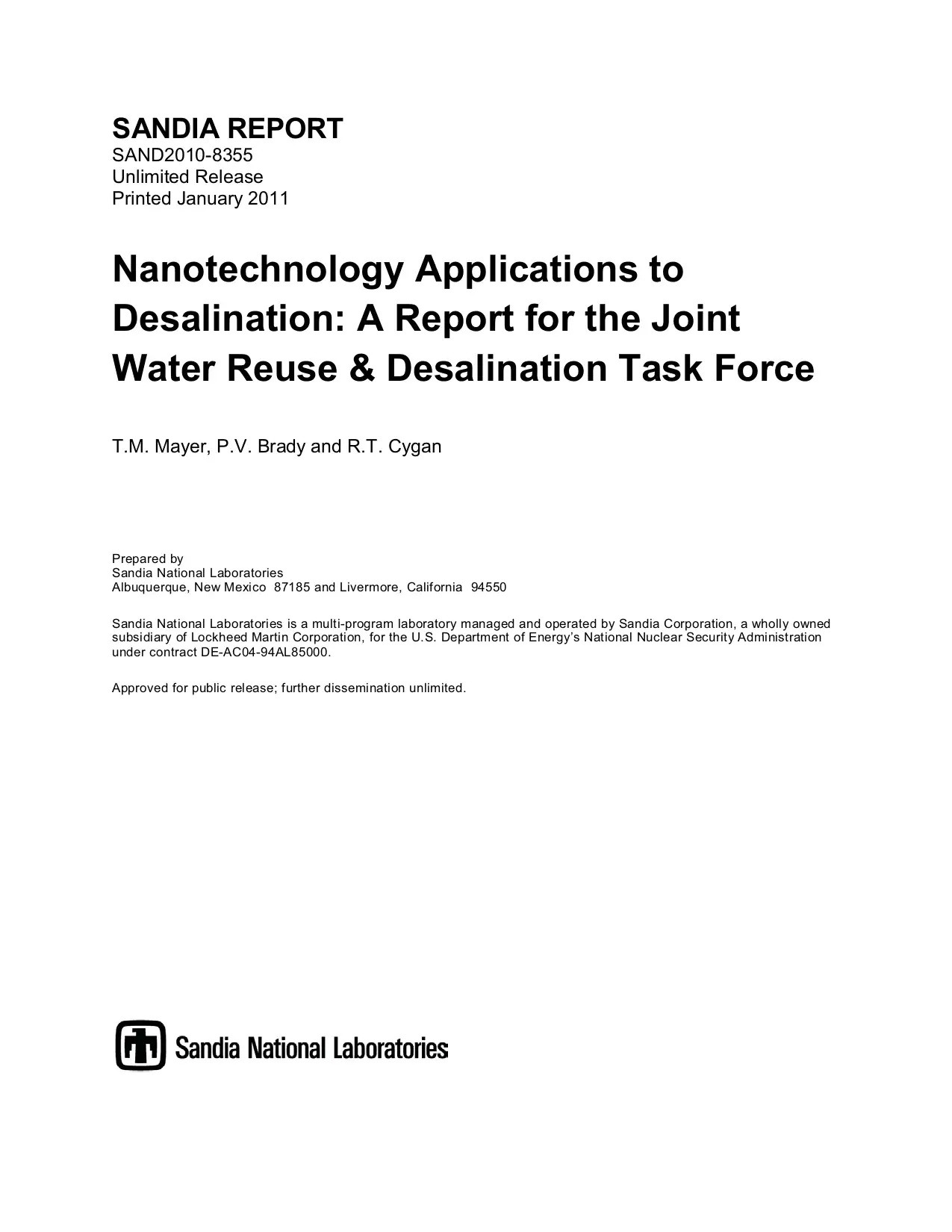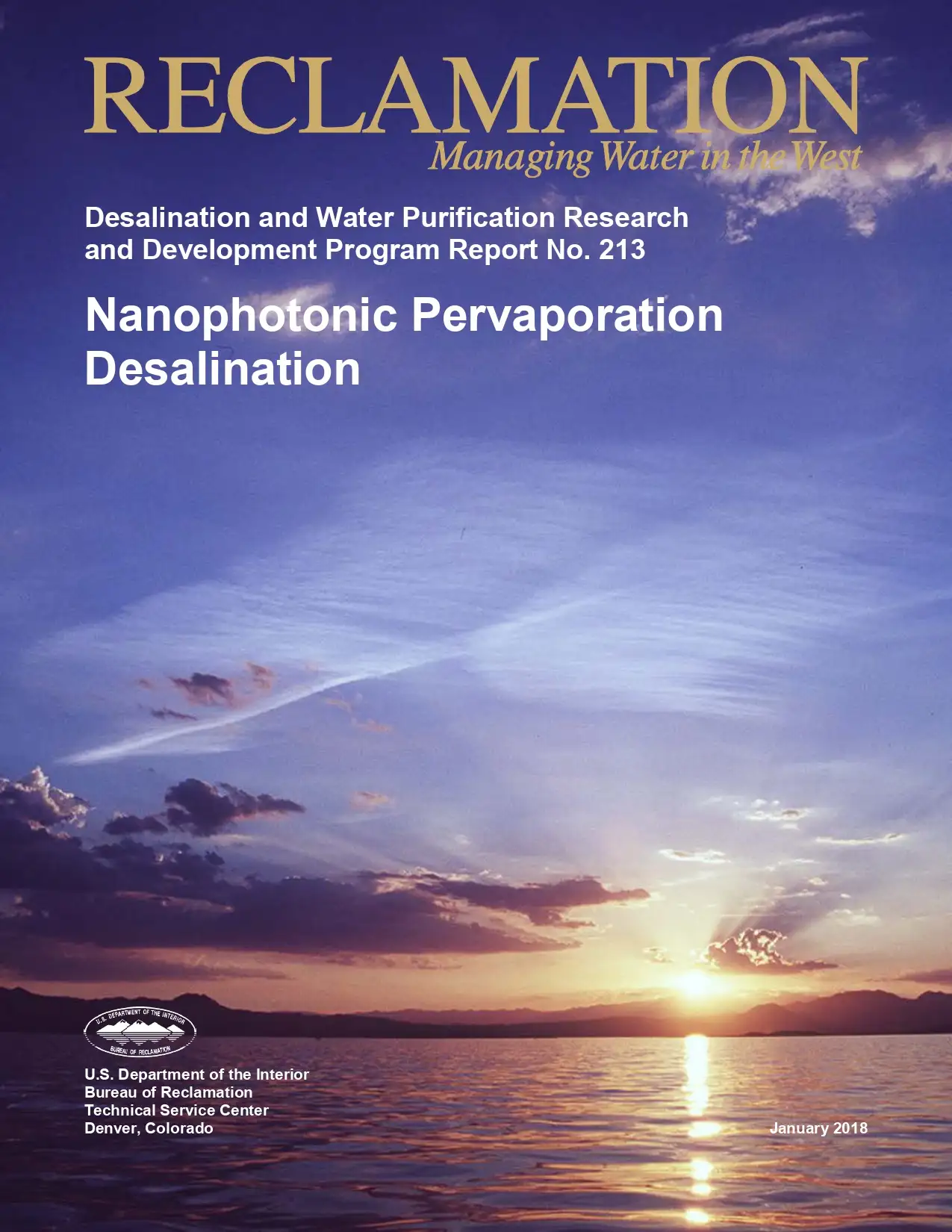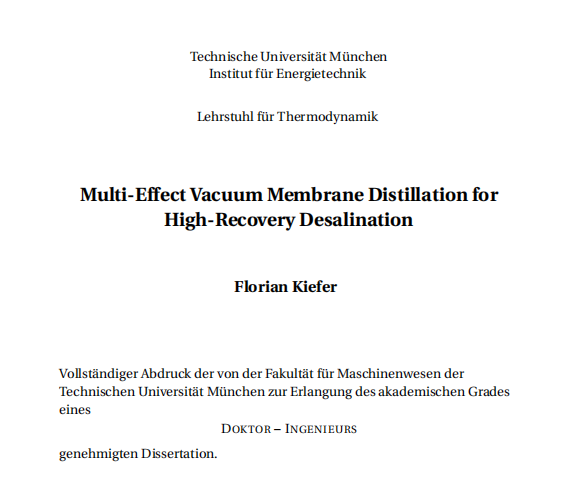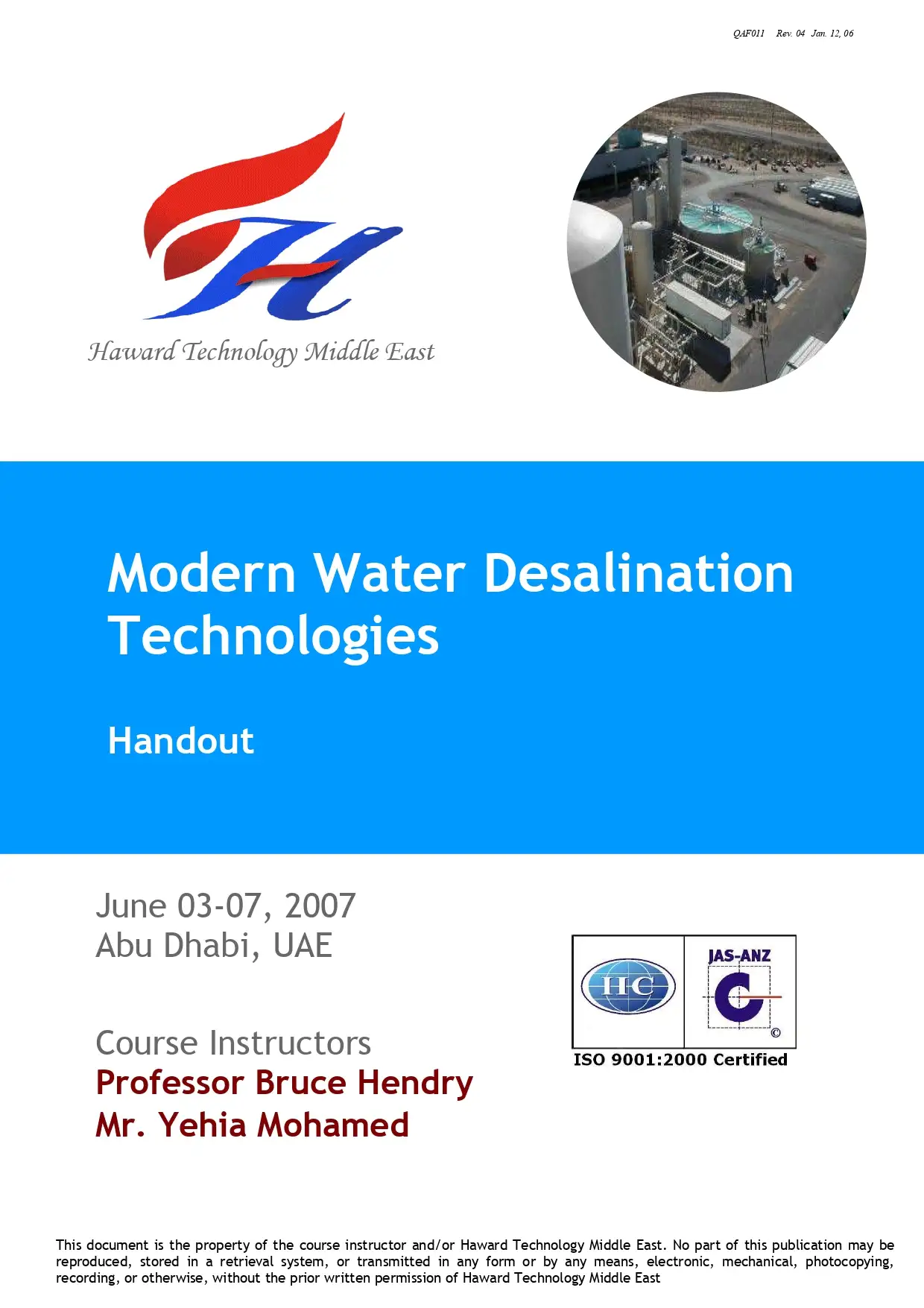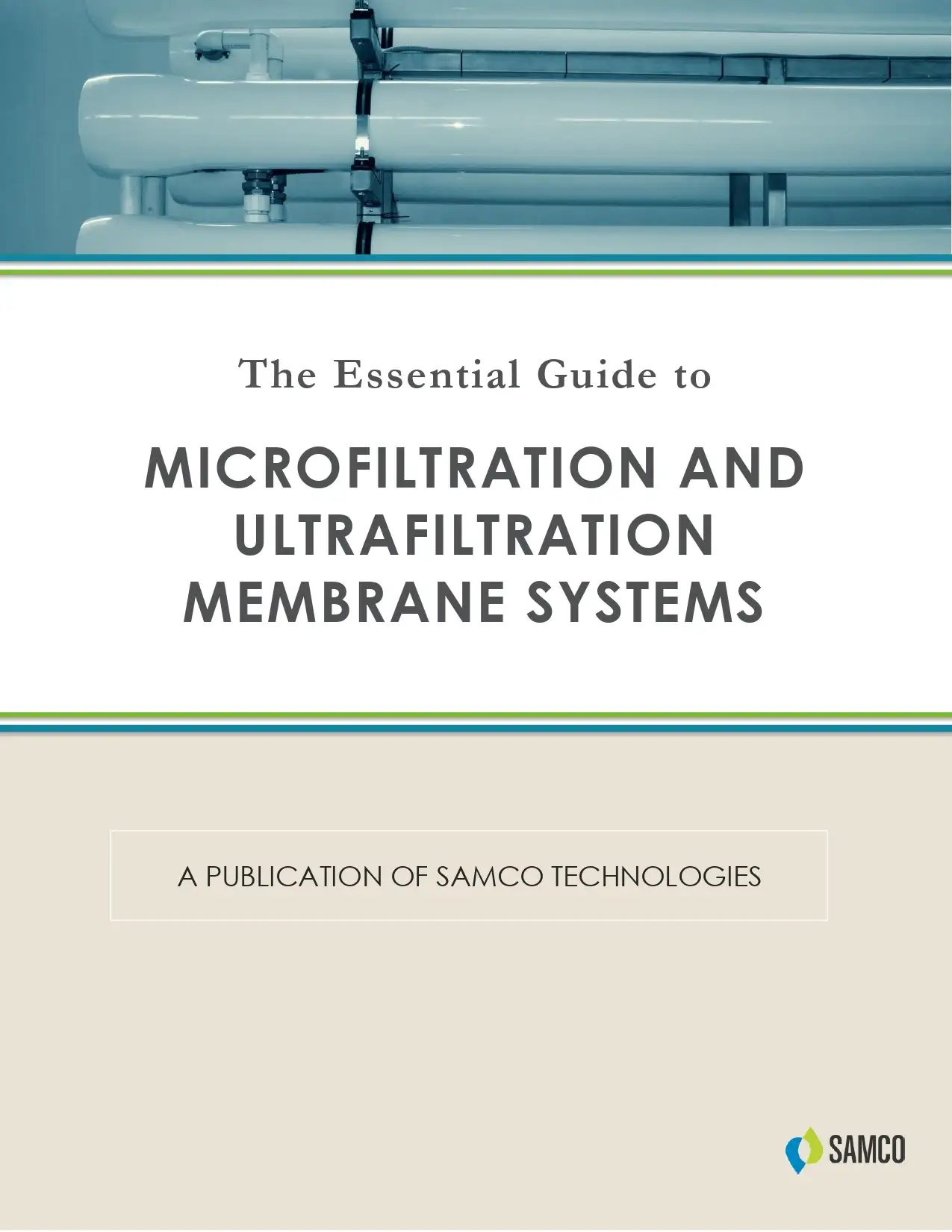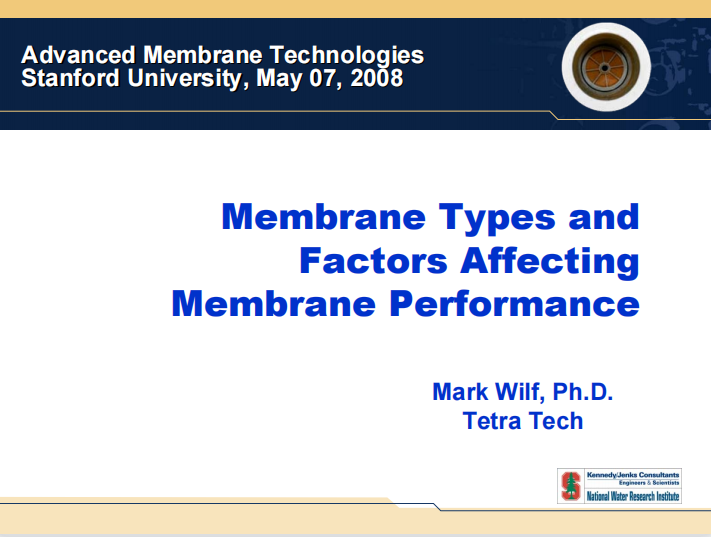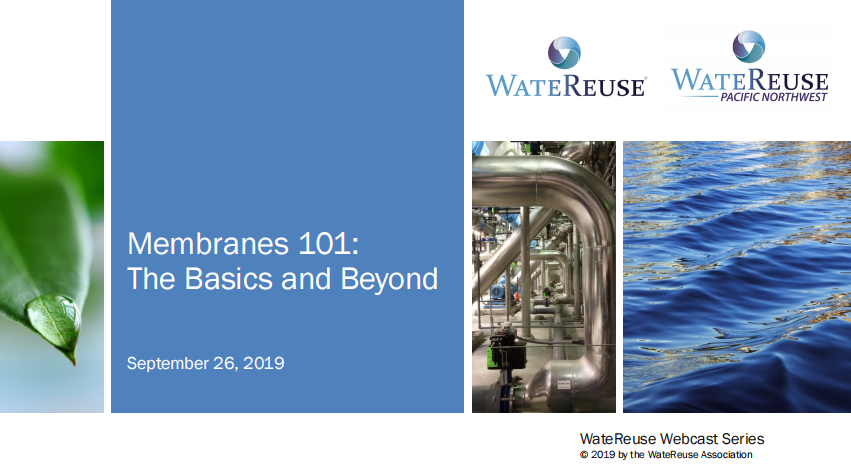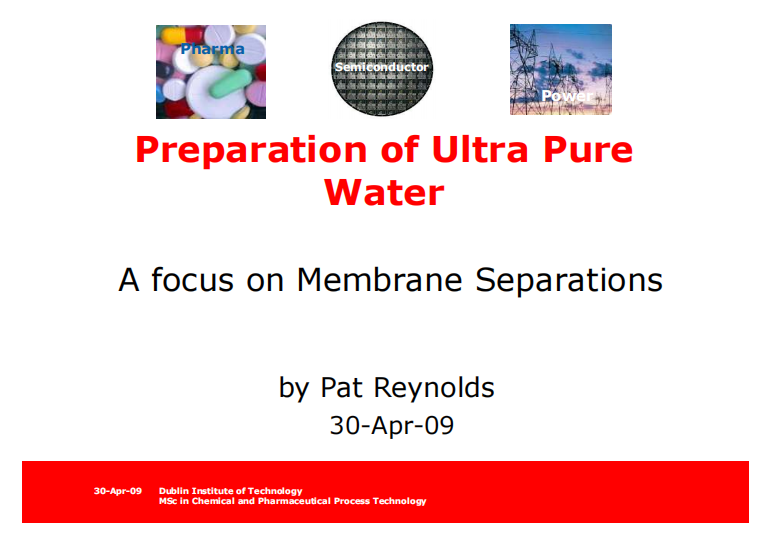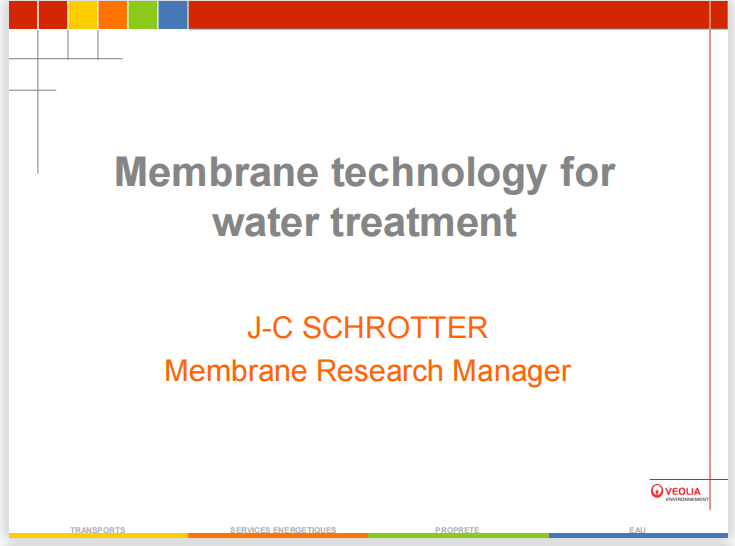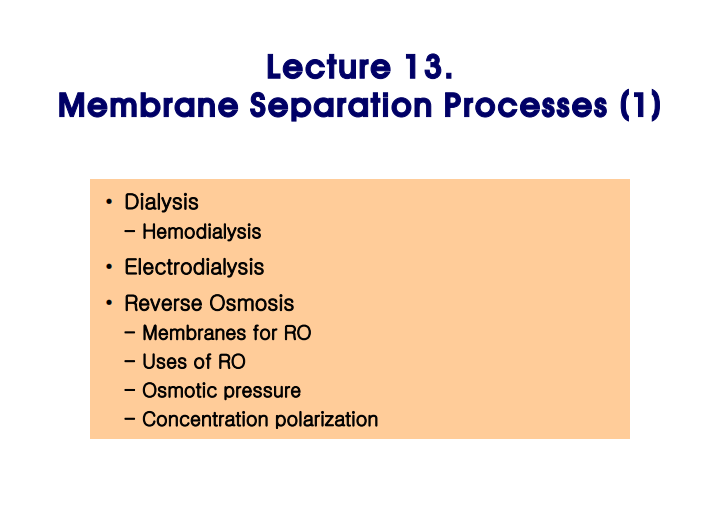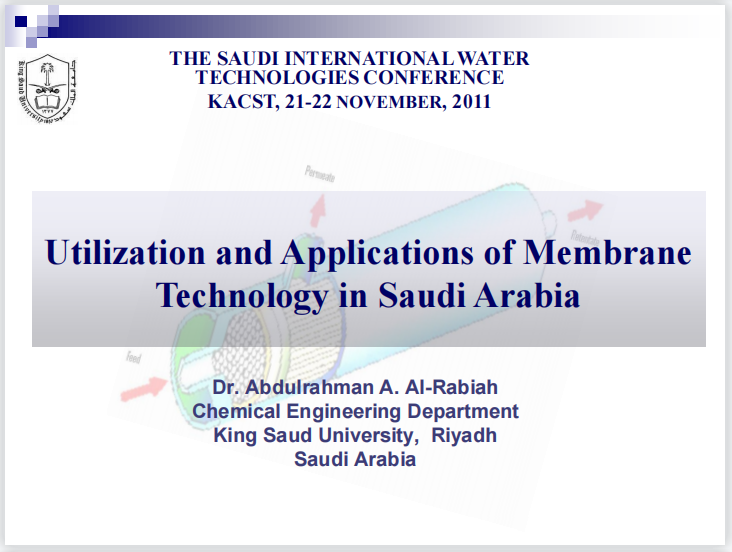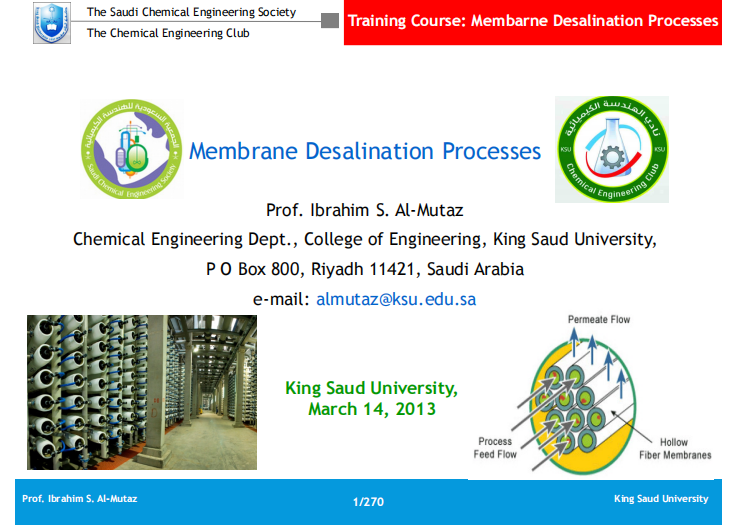Modeling The Reverse Osmosis Processes Performance Using Artificial Neural Networks
One of the more serious problems encountered in reverse osmosis (RO) water treatment processes is the occurrence of membrane fouling, which limits both operation efficiency (separation performances, water permeate flux, salt rejection) and membrane life‐time. In the present study, artificial neural network (ANN)‐based models were developed based on direct analysis of experimental data for predicting process operation performance. Two approaches were considered; one based on characterizing the organic compounds passage through RO membranes, and a second one based on modeling the dynamics of permeate flow and separation performances for a full‐scale RO desalination plant.
Modeling The Reverse Osmosis Processes Performance Using Artificial Neural Networks
One of the more serious problems encountered in reverse osmosis (RO) water treatment processes is the occurrence of membrane fouling, which limits both operation efficiency (separation performances, water permeate flux, salt rejection) and membrane life‐time. In the present study, artificial neural network (ANN)‐based models were developed based on direct analysis of experimental data for predicting process operation performance. Two approaches were considered; one based on characterizing the organic compounds passage through RO membranes, and a second one based on modeling the dynamics of permeate flow and separation performances for a full‐scale RO desalination plant.
Nanotechnology Applications to Desalination: A Report for the Joint Water Reuse & Desalination Task Force
Abstract:
Nanomaterials and nanotechnology methods have been an integral part of international research over the past decade. Because many traditional water treatment technologies (e.g. membrane filtration, biofouling, scale inhibition, etc.) depend on nanoscale processes, it is reasonable to expect one outcome of nanotechnology research to be better, nano-engineered water treatment approaches. The most immediate, and possibly greatest, impact of nanotechnology on desalination methods will likely be the development of membranes engineered at the near-molecular level. Aquaporin proteins that channel water across cell membranes with very low energy inputs point to the potential for dramatically improved performance. Aquaporin-laced polymer membranes and aquaporin-mimicking carbon nanotubes and metal oxide membranes developed in the lab support this. A critical limitation to widespread use of nano engineered desalination membranes will be their scalability to industrial fabrication processes. Subsequent, long-term improvements in nano engineered membranes may result in self-healing membranes that ideally are 1) more resistant to biofouling, 2) have biocidal properties, and/or 3) selectively target trace contaminants.
Nanotechnology Applications to Desalination: A Report for the Joint Water Reuse & Desalination Task Force
Abstract:
Nanomaterials and nanotechnology methods have been an integral part of international research over the past decade. Because many traditional water treatment technologies (e.g. membrane filtration, biofouling, scale inhibition, etc.) depend on nanoscale processes, it is reasonable to expect one outcome of nanotechnology research to be better, nano-engineered water treatment approaches. The most immediate, and possibly greatest, impact of nanotechnology on desalination methods will likely be the development of membranes engineered at the near-molecular level. Aquaporin proteins that channel water across cell membranes with very low energy inputs point to the potential for dramatically improved performance. Aquaporin-laced polymer membranes and aquaporin-mimicking carbon nanotubes and metal oxide membranes developed in the lab support this. A critical limitation to widespread use of nano engineered desalination membranes will be their scalability to industrial fabrication processes. Subsequent, long-term improvements in nano engineered membranes may result in self-healing membranes that ideally are 1) more resistant to biofouling, 2) have biocidal properties, and/or 3) selectively target trace contaminants.
Nanophotonic Pervaporation Desalination
ABSTRACT:
This research focused on evaluating concentration polarization in a hybrid reverse osmosis/pervaporation system for managing inland brackish water desalination concentrate through computational analysis and experiments. Concentration polarization is more significant in pervaporation than in reverse osmosis. The propensity for scaling based on activities is lower than that based on concentrations and can be mitigated when necessary by adjusting residence time or adding antiscalant. The secondary focus was developing flux-enhanced nanophotonic pervaporation membranes. The photothermal effect resulted in up to 69% enhancement in flux in the first-generation nanophotonic membranes for recovery of brackish waters, with chloride rejections greater than 99.9%. The photothermal effect also has the potential to mitigate concentration polarization in pervaporation
Nanophotonic Pervaporation Desalination
ABSTRACT:
This research focused on evaluating concentration polarization in a hybrid reverse osmosis/pervaporation system for managing inland brackish water desalination concentrate through computational analysis and experiments. Concentration polarization is more significant in pervaporation than in reverse osmosis. The propensity for scaling based on activities is lower than that based on concentrations and can be mitigated when necessary by adjusting residence time or adding antiscalant. The secondary focus was developing flux-enhanced nanophotonic pervaporation membranes. The photothermal effect resulted in up to 69% enhancement in flux in the first-generation nanophotonic membranes for recovery of brackish waters, with chloride rejections greater than 99.9%. The photothermal effect also has the potential to mitigate concentration polarization in pervaporation
Multi-Effect Vacuum Membrane Distillation for High-Recovery Desalination
Acknowledgements:
The thesis at hand evolved during my time as research associate at the Insti tute of Thermodynamics of Technical University of Munich. The underlying work was funded by the German Federal Ministry of Education and Research (BMBF) within the Tunisian-German research project Solar Powered Air Conditioning Efficiency (FKZ 01DH13019), which is gratefully acknowledged. First, I want to thank Prof. Dr.-Ing. Thomas Sattelmayer for the scientific supervision of my thesis and for showing that often the simple solutions arethe more powerful ones. My special thanks go to Prof. Dr. John Lienhard for being the second examiner and Prof. Dr. Sonja Berensmeier for being the chairwoman of the examination despite the challenging conditions during the COVID-19 lockdown. Within the research project funded by the BMBF, I want to thank Dr.-Ing. Markus Spinnler for initiating the project and the associated industry partners from memsys GmbH, here especially Markus Wenzel, and from W.L. Gore and Associates, here especially Ahmad Shahrouri. Special thanks go to Prof. Dr. Mohamed Jomaâ Safifi for the warm welcome to Tunisia. A doctoral thesis does not come without scientifific discussion and exchange of ideas. I want to thank all my colleagues at the Institute of Thermodynamics. First and foremost, I want to thank Alexander Präbst who signifificantly contributed to the success of our publications with knowledge, ideas, and a good portion of skepticism. Special thanks also go to Bernd Heithorst, Michael Schiffner, and Paul Riffat for support, discussions, and friendship. Outside the institute, I want to thank Simon Hager as well as Katia Rodewald for discussions on water treatment, scaling, and analysis of scaled membranes. One can discuss a lot about experimental work, but finally an experiment will be only as good as the parts of the test rig manufactured by the workshop. I am especially grateful for the support by Thomas Schleussner and Jens Hümmer. Finally, I want to thank my family for their support and confidence. I am indescribably grateful for the support, the patience, and the unconditional love that Annemarie has shown me in the last years, which only made this thesis possible.
Multi-Effect Vacuum Membrane Distillation for High-Recovery Desalination
Acknowledgements:
The thesis at hand evolved during my time as research associate at the Insti tute of Thermodynamics of Technical University of Munich. The underlying work was funded by the German Federal Ministry of Education and Research (BMBF) within the Tunisian-German research project Solar Powered Air Conditioning Efficiency (FKZ 01DH13019), which is gratefully acknowledged. First, I want to thank Prof. Dr.-Ing. Thomas Sattelmayer for the scientific supervision of my thesis and for showing that often the simple solutions arethe more powerful ones. My special thanks go to Prof. Dr. John Lienhard for being the second examiner and Prof. Dr. Sonja Berensmeier for being the chairwoman of the examination despite the challenging conditions during the COVID-19 lockdown. Within the research project funded by the BMBF, I want to thank Dr.-Ing. Markus Spinnler for initiating the project and the associated industry partners from memsys GmbH, here especially Markus Wenzel, and from W.L. Gore and Associates, here especially Ahmad Shahrouri. Special thanks go to Prof. Dr. Mohamed Jomaâ Safifi for the warm welcome to Tunisia. A doctoral thesis does not come without scientifific discussion and exchange of ideas. I want to thank all my colleagues at the Institute of Thermodynamics. First and foremost, I want to thank Alexander Präbst who signifificantly contributed to the success of our publications with knowledge, ideas, and a good portion of skepticism. Special thanks also go to Bernd Heithorst, Michael Schiffner, and Paul Riffat for support, discussions, and friendship. Outside the institute, I want to thank Simon Hager as well as Katia Rodewald for discussions on water treatment, scaling, and analysis of scaled membranes. One can discuss a lot about experimental work, but finally an experiment will be only as good as the parts of the test rig manufactured by the workshop. I am especially grateful for the support by Thomas Schleussner and Jens Hümmer. Finally, I want to thank my family for their support and confidence. I am indescribably grateful for the support, the patience, and the unconditional love that Annemarie has shown me in the last years, which only made this thesis possible.
The Essential Guide To Microfiltration And Ultrafiltration Membrane Systems
Microfiltration (MF) and ultrafiltration (UF) systems solve a variety of process liquid treatment and purification needs, generally with low operational costs and a small footprint. MF and UF are typically incorporated within a larger treatment process, and, when used to pretreat process streams, MF/UF systems are particularly effective at preventing costly fouling of downstream equipment, such as RO units, or removing bacteria and viruses from drinking water. If you’re wondering which pretreatment or contaminant removal systems are right for your facility, you might be asking “What are microfiltration and ultrafiltration systems and how do they work?”
The Essential Guide To Microfiltration And Ultrafiltration Membrane Systems
Microfiltration (MF) and ultrafiltration (UF) systems solve a variety of process liquid treatment and purification needs, generally with low operational costs and a small footprint. MF and UF are typically incorporated within a larger treatment process, and, when used to pretreat process streams, MF/UF systems are particularly effective at preventing costly fouling of downstream equipment, such as RO units, or removing bacteria and viruses from drinking water. If you’re wondering which pretreatment or contaminant removal systems are right for your facility, you might be asking “What are microfiltration and ultrafiltration systems and how do they work?”


